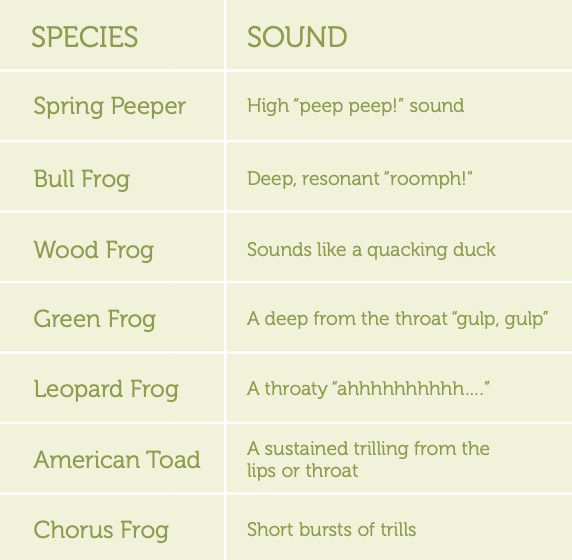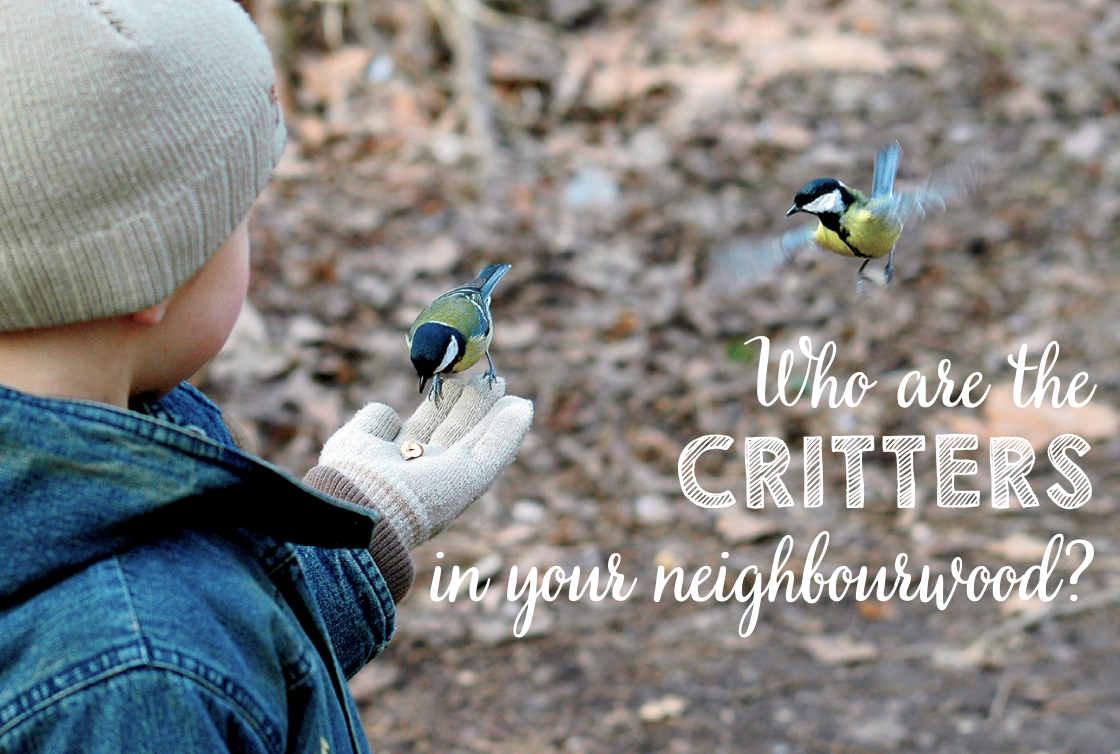Most of us, when asked, could tell you who lives in our neighbourhood. We might know the older gentleman from across the street who takes his daily walk or we may know the kids that frolic and play in our nearby parks and along the street. However, we tend to forget that our neighbourhood also consists of other living things.
From the trees that uptake carbon and give out oxygen, to the birds overhead that warble out their urgent spring time songs; from the nightly prowl of the racoon, to the beautiful wildflowers that bloom in a riot of colour, we are part of a marvelous integrated, living system. Nature is part of the fabric of our community too. You might say that, together, we form a “neighbourwood”, so this spring get to know who lives in yours! Here are a few hints to get you started.
TRY BIRD-WHISPERING
I was skeptical when a birding friend told me he could call birds in. “What are you talking about?” I asked him, incredulous. Birds are skitterish. If there is one thing I know, they don’t come when they’re called.
With a smile on his face and a glint his eye, he said, “I’ll show you.” As we stood under the canopy of oaks and maples in a nearby park, he tilted his head upwards and let go with the strangest of sounds. By pursing his lips, he uttered a stream of loud “pssshhhing” noises. He repeated each phrase a few times a second (“pish, pish, pish”…), emphasizing the “p” and the “ish” parts. I looked at him quizzically. Then he began to kiss the backs of his two fingers.
What the heck? I thought – surely he needs some psychological attention. Then he told me to stand still. So I did. It was then that the birds began to arrive. First Black-Capped Chickadees flitted in, followed by White and Red-Breasted Nuthatches. There were warblers, woodpeckers and other birds that swooped by to check us out. By the time a few minutes passed, we had over sixty birds near us. Some of the chickadees were only a few feet away! How did my friend do this?
He used the secret weapon known to birders as, you might have guessed, “pishing.” It works especially well with small songbirds. Pishing simply involves taking a deep breath and quickly repeating the sound “pssh” as you let the air out in one, drawn-out exhale. At first, you’ll probably have to pish fairly loudly! But you can lower the volume once the bird or birds get closer. Continue for at least a couple of minutes to give all of the different species that may be present a chance to make their way towards you. You can also kiss the back of your hand or fingers, creating squealing noises.
Chickadees and nuthatches are especially receptive to both of these sounds, but other species will almost always show up as well, especially if you are patient. Don’t be surprised if you end up with birds practically at arm’s reach. It is believed that birds respond to pishing because it sounds similar to the scold calls of chickadees. Scold calls are used when there is a potential threat in the area such as an owl. Other chickadees, along with birds of other species, are attracted by these sounds because they are curious about the nature of the potential threat
This spring, practice being a bird whisperer and who knows what birds may be conjured up by your pursed lips and your strange sounds?! Visit www.ecoparent.ca/extras/SPR16 to find out more about how to pish.
TAKE IN A FROG FESTIVAL
To experience one of the wonders of spring, listen to the melodious strains of a frog orchestra, courtesy of the frogs of Ontario or the peepers of the ponds “Out East”. They’ll be performing at a wetland near you. To appreciate these nocturnal stylings, walk to a nearby wet area – a marsh, swamp or bog – just as the sun is just starting to set. Take your two hands, cup them behind your ears and press your fingers together. You’ve just amplified your hearing by 10 times! Now stop and soak up the sounds of spring as they seep into your extended ears. Listen for the high, melodious peep of the Spring Peeper. Or the trilling bursts of sound from the Chorus Frog.
Later on, see if you can identify the low “garomph” of the Bull Frog or the banjo-like strumming call of the Green Frog and the throaty croak of the Leopard Frog. To learn to identify your frog songs, go to www.frogwatch.ca. Frogs are “bio-indicators.” Because their skin is sensitive to pollutants, any time you hear a wetland filled with the songs of frogs, you know that the water quality is probably quite good. If you ever wondered what frogs are singing about, well, roughly translated, here is what they are saying: “Hey, if you are a girl frog of my species…come on over. If you are another male, BACK OFF!” It is the male frogs who sing for the same reason that birds do, to attract a mate and to protect their territory. That’s just how frogs roll.

SQUIRREL ACTION/DRAMA/COMEDY
Squirrels are easy to take for granted – they are seemingly everywhere. However, because we rarely take the time to observe them closely, we miss out on a number of interesting behaviours that are just as captivating as those of rarer, more elusive mammals. Find an area where a lot of squirrels are present such as a local park or maybe your own backyard. Sit on the ground and watch them quietly for 15 minutes, at the same time of day, two or three times a week. How many of the following behaviours, sounds, color forms, etc. (see over) are you able to witness? Check them off, including the date and time. Try to distinguish between individual squirrels that you see often, maybe giving them each a name. This spring take the time whisper in birds, to listen to the magical nocturnal symphony of an amphibious orchestra or to watch the energetic antics of squirrels. These are the critters in your neighbourwood, and knowing just a bit more about them makes our communities that much more diverse, vibrant and interesting!
Click the link to download this article: Download PDF

